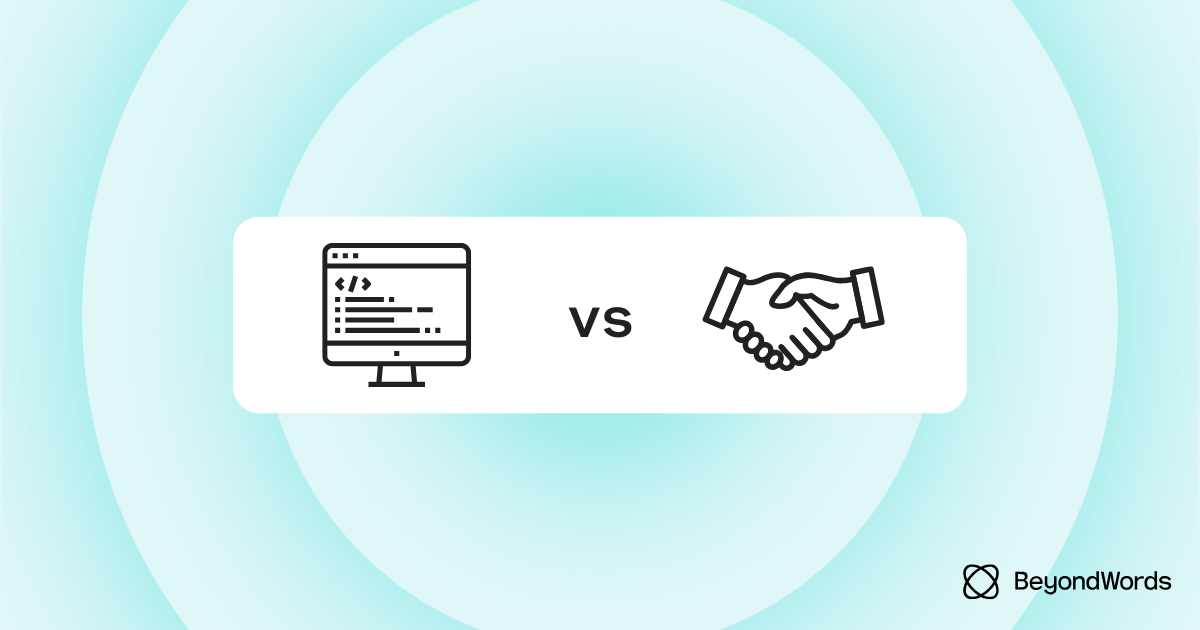5 reasons why people listen to audio content

Demand for audio content is higher than ever, but what motivates people to listen? What causes someone to click play on an audio article, download a podcast, or opt for an audiobook? Understanding this is key to engaging and segmenting your audience effectively.
Keep reading or listening for the five key reasons why people listen to audio content:
1. To multitask
People answer the question: "What do you do while listening to audio?"
In the US, the ability to multitask is the most popular reason for listening to spoken-word audio—71% of monthly listeners say it plays a role in their decision.
While reading (pretty much) requires our undivided attention, listening gives us more freedom. We can consume audio while we're getting ready, cooking, cleaning, exercising, or driving, for example.
With so many things competing for your audience's attention, it's never been more important to create content that fits into a busy lifestyle, such as narrated articles and podcasts.
"We really are living in the glory days for audio. Not since the advent of the Walkman in the early ’80s have we seen the same kind of exponential increase in personal audio consumption."—Peter Charlton, NOVA Entertainment CEO
However, it's not just about increasing productivity. 25% of podcast listeners listen to "fill empty time"—to keep their minds occupied and entertained. This means they'll consume content they'd never even consider in another format.
2. To concentrate
Why reading and listening is the most productive way to read books
Some people find it easier to concentrate on reading when they can listen along at the same time. This is known as immersion reading or audio-assisted reading.
This bimodal learning technique is popular among language-learners, as it allows them to pair spellings and pronunciations as they go. But it can even improve comprehension and engagement in native readers, especially when it comes to complex texts. When you focus your sight and sound on the same thing, there are more ways to absorb the words—and less room for distraction.
"I decided to fire up my Kindle Paperwhite to read along with the narrator. Guess what, it was a eureka moment for me. After weeks of doing this, I think it facilitated my reading comprehension and made me understand the story better."—Arvyn Cerézo, book reviewer
Others find it easier to concentrate on audio alone. 60% of listeners say spoken-word audio allows them to process information more efficiently.
Plus, studies suggest that audio can resonate more deeply than other content formats. UCL found that "listening to audiobooks elicits a more intense physiological and emotional reaction than watching films or television", while the National Literacy Trust says that listening can aid comprehension.
3. They prefer listening to reading
56% of monthly spoken-word audio listeners say they prefer listening to reading. Even in 2018, when audio consumption was lower, 19% of Americans said they'd rather listen to the news than watch or read it.
We all process information in different ways, and approximately 30% of Americans are auditory learners (Buşan, 2014). These educational needs no doubt have a bearing on media preferences, especially when it comes to informational content such as news and reports.
"Audio is one of the most intimate forms of media because you are constantly building your own images of the story in your mind."—Emma Rodero, a communications professor at the Pompeu Fabra University in Barcelona
Perhaps audio preferences stem from the oral tradition. Throughout human history, people have shared stories and information predominantly through speech—not writing.
And even if you prefer reading or watching most of the time, you'll favor audio on some occasions—when your eyes are feeling tired, for example.
4. Reading or vision difficulties
Making your content available in audio is an effective way to improve accessibility, as it can cater to people with a range of reading limitations and vision impairments. This includes people with disabilities, such as blindness or dyslexia, as well as those with reading difficulties or temporary vision loss.
These limitations can affect a large portion of your audience. According to a PIAAC study of 24 OECD countries, 15.5% of adults demonstrate "very poor literacy skills" (Grotlüschen et al., 2016)). Globally, approximately 2.2 billion people have a vision impairment.
"Audio articles help me get the news easier and faster. I have dyslexia, which makes it hard to read the news. Screen-reading software is unreliable, and I don't always have access to it. So I really appreciated it when my chosen news source started using BeyondWords." — Troy Phillips
5. To reduce their screen time
More than half of Americans are on their phone more than they'd like, and around a third are taking steps to curb their habit. People are concerned about the impact of screen fatigue on their mental and physical health, and so they're looking for different ways to stay informed and entertained.
Digital audio is discovered online, but you don't need to look at a screen to consume it. This means that publishers paradoxically benefit both from rising screen times (because their content is more likely to be discovered), as well as rising concerns around screen times (because it encourages consumption of off-screen media).
Around seven in 10 Gen Zs and Millennials say audio is their preferred entertainment format because they look at screens too much during the day.
Start catering to listening needs and preferences
The appetite for audio has always been there. And now we have the infrastructure in place to support it:
- widespread adoption of audio hardware, such as smartphones, smart speakers, and earphones;
- widespread adoption of podcast platforms and other audio apps;
- the means to create quality audio quickly and affordably using text-to-speech and other technologies.
As consumers become more entrenched in their audio habits and publishers become better at catering to them, we expect listening to grow even further.
If you haven't already, now is the time to start accommodating your audience's listening needs and preferences. With our AI voices and audio publishing tools, you can maximize the benefits of converting written content into audio.
Book a demo with our team today.

